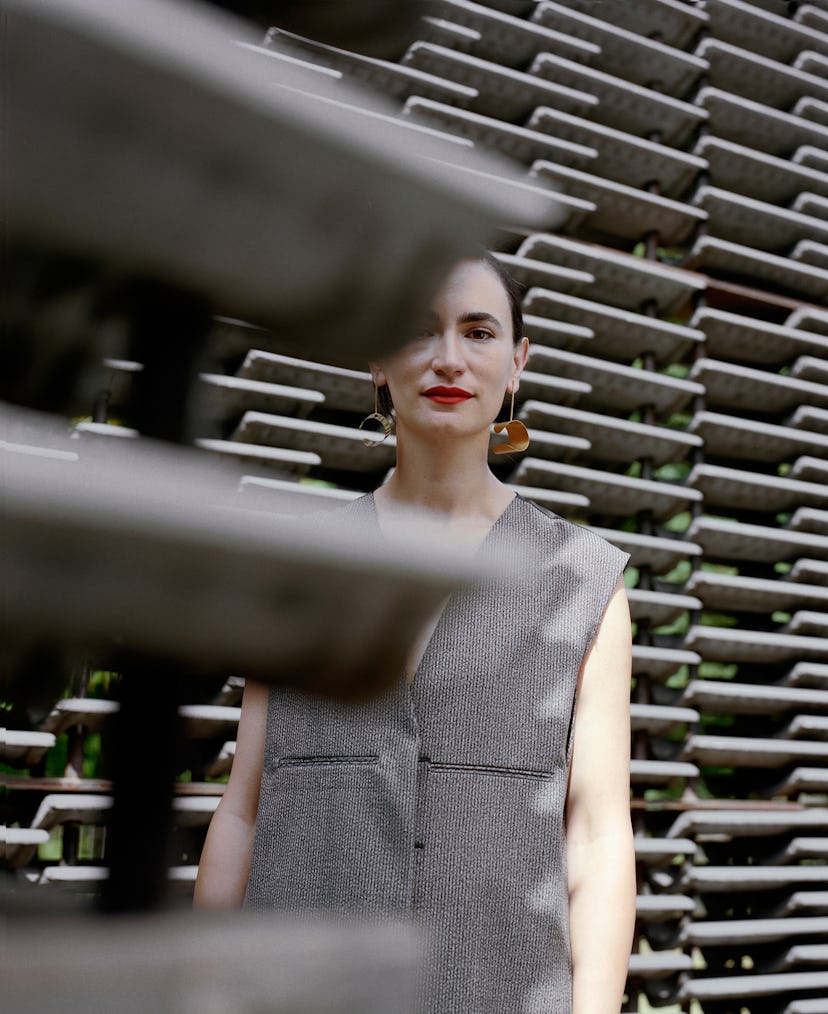Seeking Frida Escobedo, the Starchitect Hiding in Plain Sight

Frida Escobedo’s name seems to be everywhere these days. The 38-year-old architect, who opened her office in Mexico City in 2006, is known for her subtle renovations of existing buildings and her use of modest materials. Among her designs are a widely lauded expansion of La Tallera, a public gallery in the former studio of the late Mexican painter and muralist David Alfaro Siqueiros, and a renovation of the Octavio Paz library, in Cuernavaca and Guadalajara, respectively. She has participated in the Venice Architecture Biennale, the Lisbon Architecture Triennale, and the 2017 Biennale d’Architecture d’Orléans, and designed a temporary installation of mirrored platforms at the Victoria and Albert Museum in 2015. Most recently, and perhaps most prominently, Escobedo designed the Serpentine Pavilion, in London. She is the youngest architect—and only the second solo female architect, after Zaha Hadid—to get the prestigious commission. While Escobedo looks forward to the day “when we stop being surprised that a young female is doing such projects,” she also acknowledges that women in architecture have many more opportunities today.
Having said that, unlike many up-and-coming architects—regardless of gender—she does not aspire to design luxury condo towers. Escobedo says that her work is about being curious. “I’m more interested in how people occupy existing spaces. I like to observe people, forces of nature, political forces. Architecture is my way of understanding the world.” This thoughtful, socially engaged approach has characterized the architect’s work from the beginning.
Frida Escobedo, in the Serpentine Pavilion she designed, in June, wearing a Dries Van Noten dress and Fay Andrada earrings.
Escobedo graduated in 2003 from the Universidad Iberoamericana, in Mexico City, and the next year, with her former partner, the architect Alejandro Alarcón, designed Casa Negra, an arresting cinder block–and–glass house perched on four pillars. The recognition it garnered helped get the two a fellowship, and the noted architect Mauricio Rocha became a mentor. “Young architects are very ambitious,” Escobedo says. “They want to do everything. But Mauricio said, ‘You have to be patient; this is a slow career.’ It was a very big lesson.”
Later, after going out on her own, Escobedo collaborated with José Rojas on the renovation of the 1950s Hotel Boca Chica, in Acapulco, layering color and craft on the existing modernist architecture. In 2010, she designed an amphitheater-like installation of movable concrete blocks outside the Museo Experimental El Eco, in Mexico City—“my first public intervention, and a project that really defined my career,” she says. At the same time, Escobedo was in the running for the Siqueiros project and for a scholarship to a master’s program at Harvard’s Graduate School of Design; to her surprise, she got both.
A view of La Tallera, in Cuernavaca.
The Siqueiros project—“a turning point”—taught Escobedo to see architecture “as a strategy more than as form. You need to do a lot with very few resources.” She wrapped the complex of spaces in a screen of traditional Mexican celosías, or latticed concrete breeze walls. And she turned what had been a private courtyard outside the artist’s studio into a public plaza, placing two large murals by Siqueiros that had hung in the courtyard at angles to create a striking new entrance. “The murals are public art again,” Escobedo says, true to the activism of Siqueiros and his fellow Mexican muralists Diego Rivera and José Clemente Orozco.
This combination of modest but elegantly employed materials and ambitious strategy characterizes her Serpentine Pavilion from this summer. The breeze-block walls are made of stacked, dark gray cement roof tiles (made in England, rather than Mexico), and its focus is the concept of time. Aligned with the Greenwich meridian—“a compass for the rest of the globe, which demonstrates how space and time are tied to abstract ideas,” Escobedo notes—the structure has a tilted, polished stainless steel canopy that “points to true north, so you can locate yourself.” The openwork walls allow light and shadow to move through the pavilion during the day; a shallow pool reflects the changing sky.
An installation outside of the Museo Experimental El Eco, in Mexico City.
Escobedo’s eight-person studio is currently at work on a hotel in Puebla, Mexico, that is “an intervention in a 19th-century house,” and includes furniture and object design; a hotel in the Yucatán town of Bacalar that is a cluster of villas among mangroves; houses in Mexico City and elsewhere; two public-space projects in the U.S.; and social housing in Mexico, some of which uses existing buildings, an idea that Escobedo says is not only sustainable but acknowledges the emotional value of someone’s home. She feels that the public and private commissions “inform one another, and keep one another fresh and richer.”
Asked what she considers as the role of the architect today, Escobedo’s response is unapologetically political. “What is architecture doing for people? Today, architects are oriented toward exchange value versus user value,” she says, drawing a distinction between buildings designed as investment ventures and those designed for the public good. “Architecture,” she adds, “has to do more of what people really want.”